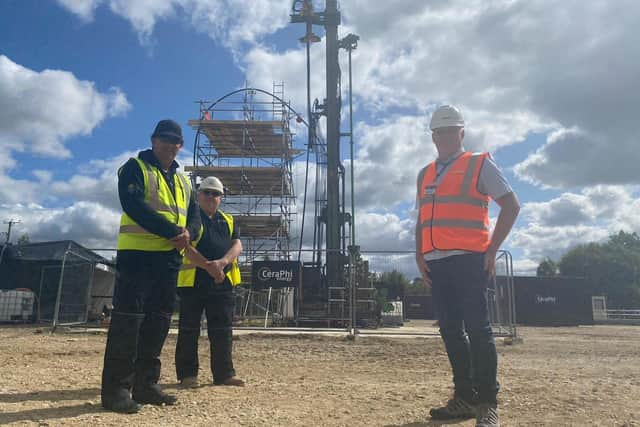Owners of controversial fracking site in Yorkshire to turn it into a geothermal energy extraction facility instead
From next month Third Energy’s Kirby Misperton KM8 well site, which was the focus of many months of heated protests after North Yorkshire County Council approved hydraulic fracturing for gas there in 2016, will become an operational test site for geothermal energy production, led by pioneering firm CeraPhi Energy2.
Ahead of the eight-week trial, CeraPhi says it has patented technologies to convert existing wells at the end of their life by plugging the bottoms and using circulating fluids in a closed tube system within the well to bring the heat found deep underground to the surface.
Advertisement
Hide AdAdvertisement
Hide AdUnlike hydraulic fracturing CeraPhi’s process does not interfere with any rock formation, sub-surface system or any fluids, and has been likened to the reverse process of a fridge, but without using carbon dioxide.


CeraPhi chief executive Karl Farrow said: “We are not touching the geology – sending water down the outside of the tubes to collect the heat before bringing the water up the tubing to the surface where the heat is then processed.”
The company says there are a potential further 680 oil and gas wells which could be converted in the UK, including more than 200 between Lincolnshire and the North-East, and 12 in the Kirby Misperton area alone.
Tests have revealed the temperature at the bottom of the 3km deep KM8 well is about 110C and the firm is expecting to get up to 90C when transferred by liquid to the surface, which it says is sufficient to supply heat to up to 400 homes for about 40 years.
Advertisement
Hide AdAdvertisement
Hide AdOther users of the heat could be a large-scale agricultural project in an acclimatised environment, distilleries or agricultural crop drying.
Feasibility studies for using the KM8 well include using the heat for a local swimming pool, to distill alcohol or to power anaerobic digesters.
Those behind the project say its potential is huge, particularly in rural areas, and that zero carbon housing estates could be built around geothermal wells, providing heat to properties for a flat rate connection charge rather than per kilowatt.
Mr Farrow said: “The potential of having an evergreen energy site which is focused for renewable energy in a really small footprint – unlike solar and wind which requires a massive area of land – is very cool.”
Advertisement
Hide AdAdvertisement
Hide AdThird Energy director Steve Mason, who was part of a renewable energy consortium which took over Third Energy in 2021, said the change of direction for the site had “mended the community”, with some 80 per cent supporting the geothermal plans in a Ryedale District Council poll last year.
Mr Mason said: “I wouldn’t be sat here if I didn’t believe in what we are trying to do as I was on the other side of the fence, with Frack Free United, running the political campaign against fracking, driving for the moratorium in Parliament in 2019.
“How I’ve ended up sitting 50 yards from the fracking well site I was opposing still seems quite surreal.
“The irony is that this started off as a fossil fuel site and it could contribute to a circucular economy site where we look at locally produced food or local heat housing.
Advertisement
Hide AdAdvertisement
Hide Ad“As a country we are still not quite clear how we are going to decarbonise rural areas to hit targets, so if we can provide heat for 40 years to the local community, or even into Pickering, it would be a great development.”
